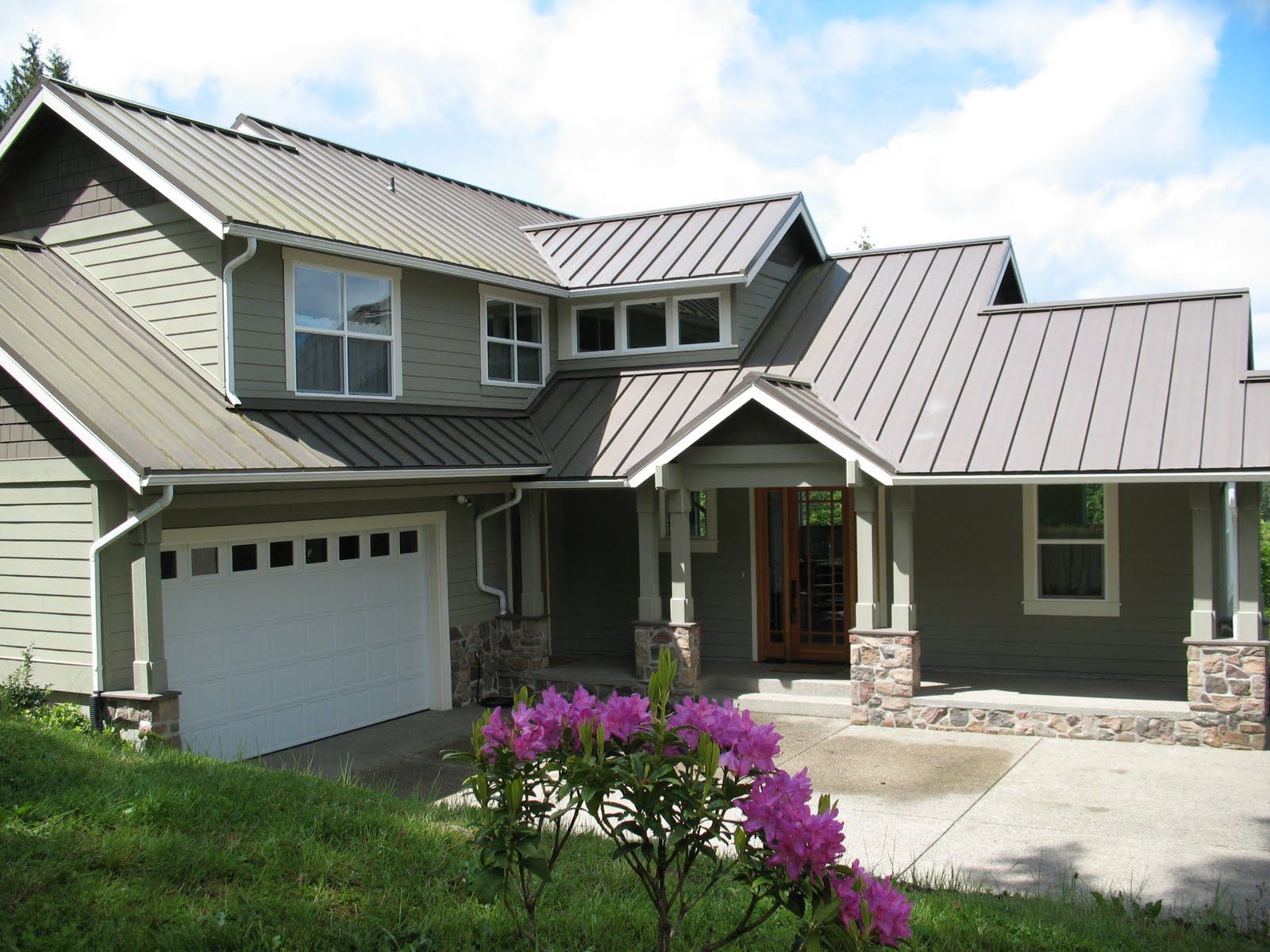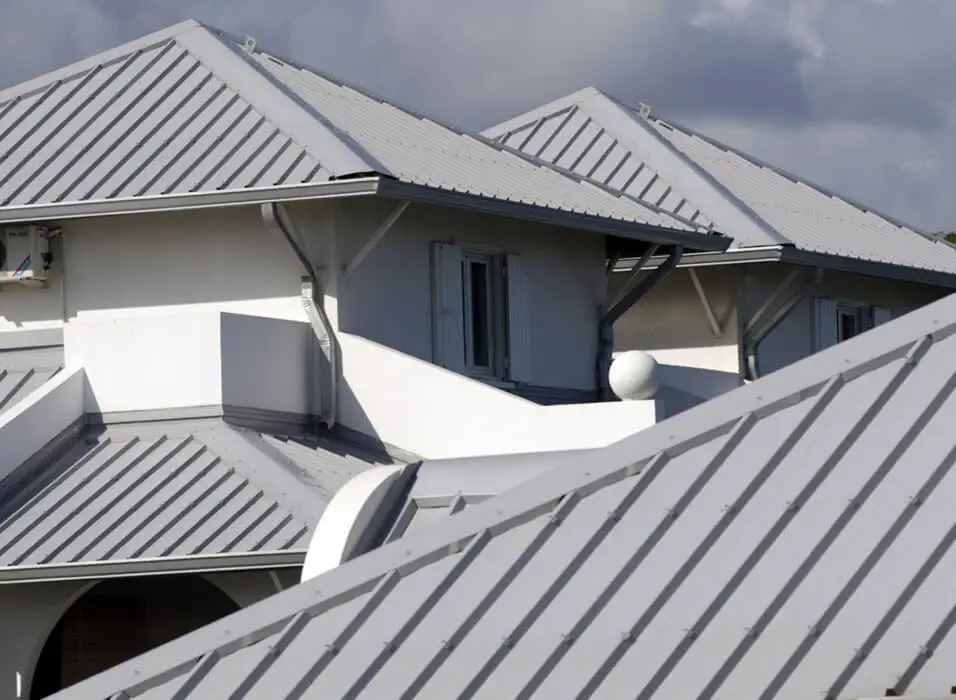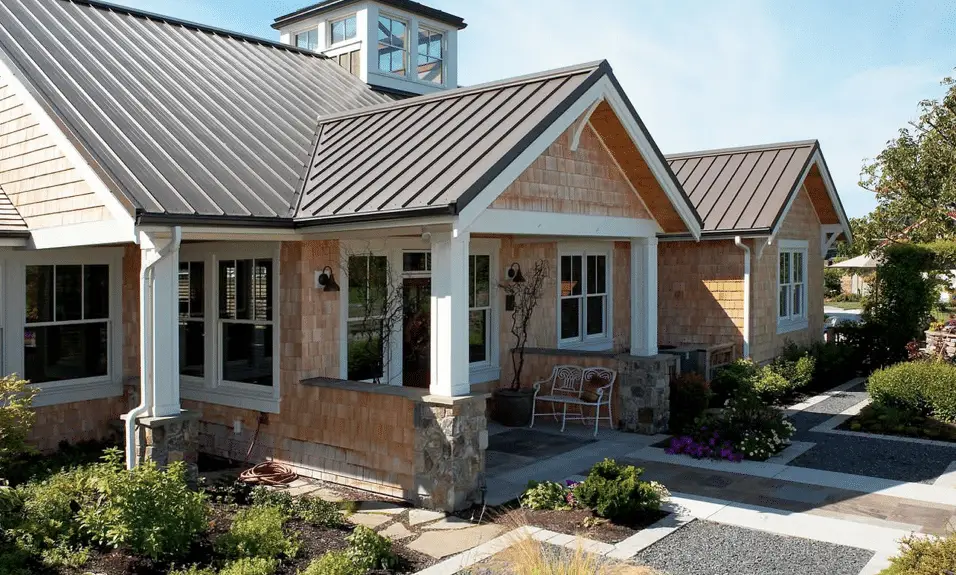How To Stop Condensation On Metal Roof
Introduction
How To Stop Condensation On Metal Roof: Condensation on a metal roof can be a frustrating problem for many homeowners. It not only affects the appearance of the roof but can also lead to potential damage if left unaddressed. Understanding the causes of condensation and implementing effective solutions is crucial to prevent further issues. Condensation occurs when warm, moist air comes into contact with a cold surface, such as a metal roof. This phenomenon is particularly common in regions with fluctuating temperatures and high humidity levels. Over time, this can lead to the formation of mold, mildew, and even structural damage if not properly addressed.
One of the primary factors contributing to condensation on a metal roof is inadequate ventilation. Without proper airflow, moisture becomes trapped within the roofing system, increasing the likelihood of condensation. Additionally, insulation plays a crucial role in preventing condensation. Insufficient insulation can result in temperature differences between the interior and exterior of the roof, leading to condensation formation. Therefore, it is essential to ensure proper ventilation and insulation to minimize condensation-related issues.
There are several effective methods to stop condensation on a metal roof. One approach is to improve ventilation by installing ridge vents, soffit vents, or exhaust fans. These ventilation systems allow air to circulate freely, reducing the chances of condensation. Additionally, using insulation with a high R-value can help regulate temperature and prevent moisture buildup. Another solution is to apply a vapor barrier beneath the metal roof, which acts as a protective layer against condensation. Regular maintenance, such as clearing debris and ensuring proper drainage, is also crucial in preventing condensation-related issues.
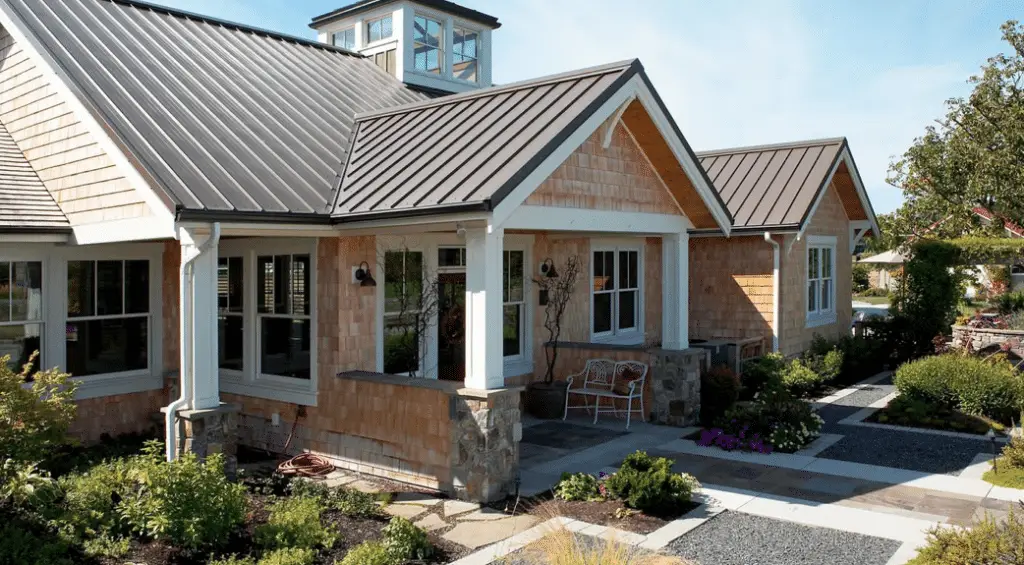
How do I stop my roof from sweating
How to prevent condensation on your roofing sheets
- Control moisture. For condensation to occur, there must be moisture in the air.
- Ventilation.
- Correct insulation.
- Choosing the correct pitch and corrugations.
- Invest in a dehumidifier.
- Use anti-condensation paint.
Insulation:
One of the primary causes of roof sweating is inadequate insulation. To prevent this, it is crucial to ensure that your attic is properly insulated. This can be achieved by installing insulation materials such as fiberglass batts, spray foam, or blown-in cellulose.
Ventilation:
Proper ventilation is another key factor in preventing roof sweating. Good ventilation allows for the exchange of air between the attic and the outside environment, reducing the buildup of moisture. There are two main types of ventilation systems: intake vents and exhaust vents. By ensuring a balanced ventilation system, you can effectively control the humidity levels in your attic and minimize roof sweating.
Vapor Barrier:
Installing a vapor barrier can also help prevent roof sweating. A vapor barrier is a material that inhibits the passage of moisture from one area to another. It is typically installed on the warm side of the insulation, facing the interior of the house. The vapor barrier acts as a barrier, preventing warm, moist air from reaching the cold roof surface and condensing.
Maintenance:
In addition to insulation, ventilation, and vapor barriers, regular maintenance of your roof is essential in preventing roof sweating. Keep your gutters clean and free from debris to ensure proper drainage. Trim any overhanging tree branches that may shade the roof and promote moisture retention. Inspect your roof regularly for any signs of damage or leaks and address them promptly. By maintaining your roof in good condition, you can minimize the risk of roof sweating and prolong its lifespan.
How do you get rid of condensation on metal?
This moisture buildup can lead to various issues, including corrosion, mold growth, and reduced efficiency of metal equipment. Therefore, it is essential to address condensation promptly and effectively to prevent any potential damage. Proper airflow helps to equalize the temperature and humidity levels, minimizing the chances of condensation. You can achieve this by opening windows, using fans, or installing vents or exhaust systems.
Using dehumidifiers or moisture absorbers is another practical approach to eliminate condensation on metal surfaces. These devices work by removing excess moisture from the air, reducing the humidity levels in the surrounding environment. Dehumidifiers are particularly useful in enclosed spaces or rooms with high humidity, such as basements or bathrooms.
Applying anti-condensation coatings or treatments to the metal surface can provide long-term protection against condensation. These coatings work by creating a hydrophobic or water-repellent layer on the metal, preventing moisture from accumulating. Condensation on metal surfaces can be effectively managed and eliminated through various methods. By implementing these strategies, you can ensure that your metal remains dry, corrosion-free, and in optimal condition.
How do you stop condensation permanently?
Practical changes to stop condensation
- covering pans when cooking.
- taking quicker showers.
- avoiding drying your clothes indoors, particularly on radiators.
- opening windows, in particular at opposite sides of the house to allow for cross ventilation.
- always using an extractor fan (if you have one) when cooking.
Condensation is a common problem that many people face in their homes or workplaces. In order to stop condensation permanently, it is important to understand the causes and implement effective solutions.
One of the main causes of condensation is poor ventilation. To address this issue, it is crucial to ensure proper ventilation in the affected area. Another factor that contributes to condensation is temperature imbalance. To prevent this, it is important to maintain a consistent temperature throughout the space. Controlling humidity levels is also crucial in preventing condensation. High humidity levels increase the amount of moisture in the air, making condensation more likely. Additionally, using moisture-absorbing materials, such as silica gel or desiccants, can help reduce humidity levels in specific areas.
Lastly, it is important to address any underlying issues that may be contributing to condensation. This could include fixing leaks or repairing damaged insulation. By identifying and resolving these issues, you can effectively prevent condensation from occurring in the long term.
Stopping condensation permanently requires a combination of proper ventilation, temperature control, humidity management, and addressing underlying issues.
How do you reduce condensation naturally?
The Cure to Condensation
- Control humidity. Control the relative humidity in your home through the use of extractor fans in kitchens and bathrooms.
- Provide ventilation – ensure there is adequate ventilation throughout the property.
- Add insulation.
Condensation is a common problem that many homeowners face, especially during the colder months. It occurs when warm air comes into contact with a cold surface, causing the moisture in the air to turn into water droplets. This can lead to a variety of issues, such as mold growth, damage to furniture and walls, and an overall uncomfortable living environment. While there are several methods to reduce condensation, it is always beneficial to explore natural solutions that are both effective and environmentally friendly.
One way to naturally reduce condensation is by improving ventilation in your home. Proper airflow helps to regulate the temperature and humidity levels, preventing excessive moisture buildup. Opening windows and doors, using exhaust fans in kitchens and bathrooms, and installing vents in high-moisture areas like the laundry room can all contribute to better air circulation. Additionally, using ceiling fans can help distribute the air and prevent stagnant pockets of moisture.
Controlling the humidity levels in your home.
High humidity can exacerbate condensation issues, so it is important to keep the moisture levels in check. One way to do this is by using dehumidifiers, which extract excess moisture from the air. Placing them in areas prone to condensation, such as basements or bathrooms, can be particularly effective. Additionally, using natural desiccants like silica gel or charcoal bags can help absorb moisture in smaller spaces like closets or cabinets.
Proper insulation is also crucial in reducing condensation. Insulating your home effectively can help maintain a consistent temperature, minimizing the chances of warm air coming into contact with cold surfaces. This can be achieved by adding insulation to walls, attics, and crawl spaces. Additionally, using weatherstripping around windows and doors can help seal any gaps that may allow cold air to enter your home.
Lastly, paying attention to your daily habits can make a significant difference in reducing condensation. For example, avoiding activities that generate excess moisture, such as drying clothes indoors or boiling water without proper ventilation, can help prevent condensation from occurring. Additionally, using lids while cooking and covering pots and pans can help trap steam and prevent it from escaping into your home.
Reducing condensation naturally is possible through various methods. Improving ventilation, controlling humidity levels, ensuring proper insulation, and adopting moisture-conscious habits can all contribute to minimizing condensation issues in your home. By implementing these natural solutions, you can create a healthier and more comfortable living environment while also reducing the negative impacts of condensation on your property.
Why is my metal roof sweating?
Your metal roof is most likely sweating because the surrounding air is colder than the dew point on the metal itself. This can occur when the temperature drops suddenly or if there’s high humidity.
A metal roof sweating can be a cause of concern for homeowners, as it may lead to issues such as water damage and mold growth. Understanding the reasons behind this phenomenon is crucial in order to address the problem effectively. In this article, we will explore the possible causes of why a metal roof may sweat and provide insights on how to prevent and mitigate this issue.
Causes of Metal Roof Sweating:
One of the primary reasons for metal roof sweating is condensation. When warm, moist air comes into contact with a cold metal surface, it can cause the moisture in the air to condense into water droplets. This condensation can occur both on the exterior and interior surfaces of the metal roof. Additionally, inadequate ventilation in the attic or roof space can exacerbate the problem by trapping moisture and preventing it from escaping.
Prevention and Mitigation:
To prevent metal roof sweating, it is essential to address the underlying causes. Proper insulation and ventilation are key factors in reducing condensation. Insulating the attic or roof space can help maintain a consistent temperature, minimizing the temperature difference between the warm air inside the house and the cold metal roof. This, in turn, reduces the likelihood of condensation occurring.
Furthermore, ensuring adequate ventilation is crucial. Installing vents or fans in the attic or roof space can help remove excess moisture and maintain proper airflow. This allows any trapped moisture to escape, reducing the chances of condensation forming on the metal roof.
Additional Measures:
In addition to insulation and ventilation, there are other measures that can be taken to prevent metal roof sweating. Applying a vapor barrier beneath the metal roof can help prevent moisture from entering the roof space. This barrier acts as a barrier between the warm, moist air inside the house and the cold metal surface, reducing the potential for condensation.
Regular maintenance of the metal roof is also important. Keeping the roof clean and free from debris can help prevent moisture buildup, which can contribute to sweating. Additionally, inspecting the roof for any signs of damage or leaks and promptly addressing them can help prevent water from seeping into the roof and causing further issues.
How does condensation affect the lifespan and durability of a metal roof?
Condensation can have a significant impact on the lifespan and durability of a metal roof. When moisture accumulates on the underside of a metal roof, it can lead to various issues that can compromise its structural integrity and longevity. One of the primary concerns is the potential for corrosion. Moisture that forms as condensation can create a damp environment, providing the ideal conditions for rust and corrosion to develop on the metal surface. Over time, this corrosion can weaken the roof, leading to leaks, structural damage, and ultimately reducing its lifespan.
In addition to corrosion, condensation can also contribute to the growth of mold and mildew. The presence of excess moisture can create a breeding ground for these microorganisms, which can not only cause unsightly stains on the roof but also pose health risks to occupants. Mold and mildew can deteriorate the roof’s materials and compromise its structural integrity, further shortening its lifespan.
To mitigate the negative effects of condensation on a metal roof, proper insulation and ventilation are crucial. Insulation helps to maintain a consistent temperature on both sides of the roof, reducing the potential for condensation to form. Adequate ventilation allows for the exchange of air, preventing the buildup of moisture and promoting drying. By addressing these factors, the lifespan and durability of a metal roof can be significantly improved, ensuring its long-term performance and minimizing the need for costly repairs or replacements.
What are the most effective methods or techniques to prevent condensation on a metal roof?
Condensation on a metal roof can lead to various issues such as corrosion, mold growth, and reduced insulation effectiveness. To prevent condensation, several effective methods and techniques can be employed.
Proper ventilation: One of the most crucial steps in preventing condensation is ensuring proper ventilation in the roof system. This involves the installation of vents or exhaust fans that allow air to circulate freely, reducing the chances of moisture buildup. Adequate ventilation helps to equalize the temperature and humidity levels inside and outside the roof, minimizing the potential for condensation.
Insulation: Insulating the metal roof is another effective technique to prevent condensation. Insulation acts as a barrier, reducing the temperature difference between the interior and exterior surfaces of the roof. This helps to prevent warm, moist air from coming into contact with the cooler metal surface, thereby minimizing condensation. It is important to choose insulation materials with high moisture resistance to ensure long-term effectiveness.
Vapor barriers: Installing vapor barriers beneath the metal roof can significantly reduce condensation. These barriers act as a shield, preventing moisture from penetrating the roof system. Vapor barriers are typically made of materials with low permeability, such as polyethylene sheets. By blocking the movement of moisture-laden air, they help maintain a dry environment and minimize the risk of condensation.
Are there any specific materials or coatings that can be applied to a metal roof to reduce condensation?
Yes, there are specific materials and coatings that can be applied to a metal roof to effectively reduce condensation. One such material is a vapor barrier, which is typically installed on the underside of the metal roof. A vapor barrier acts as a barrier between the warm, moist air inside the building and the cold metal roof, preventing condensation from forming. It is important to ensure that the vapor barrier is properly installed and sealed to be effective.
In addition to vapor barriers, there are also specialized coatings available that can help reduce condensation on a metal roof. These coatings are designed to create a protective layer on the metal surface, preventing moisture from penetrating and causing condensation. Some coatings also have insulating properties, helping to regulate temperature and further minimize the risk of condensation. It is important to choose coatings that are specifically formulated for metal roofs and to follow the manufacturer’s instructions for proper application.
Are there any long-term maintenance practices or habits that can help minimize condensation on a metal roof?
Yes, there are several long-term maintenance practices and habits that can help minimize condensation on a metal roof. One important practice is to ensure proper ventilation in the attic or space below the roof. Adequate ventilation allows for the exchange of air, reducing the chances of condensation buildup. This can be achieved by installing vents or fans that promote air circulation.
Another effective maintenance practice is to regularly inspect and maintain the roof’s insulation. Insulation plays a crucial role in preventing condensation by reducing temperature differences between the interior and exterior of the roof. It is important to ensure that the insulation is properly installed and in good condition to provide optimal thermal resistance.
Additionally, it is recommended to keep the roof clean and free from debris. Leaves, branches, and other debris can trap moisture and contribute to condensation. Regularly removing any buildup of debris will help maintain a dry and well-ventilated roof surface, reducing the likelihood of condensation formation.
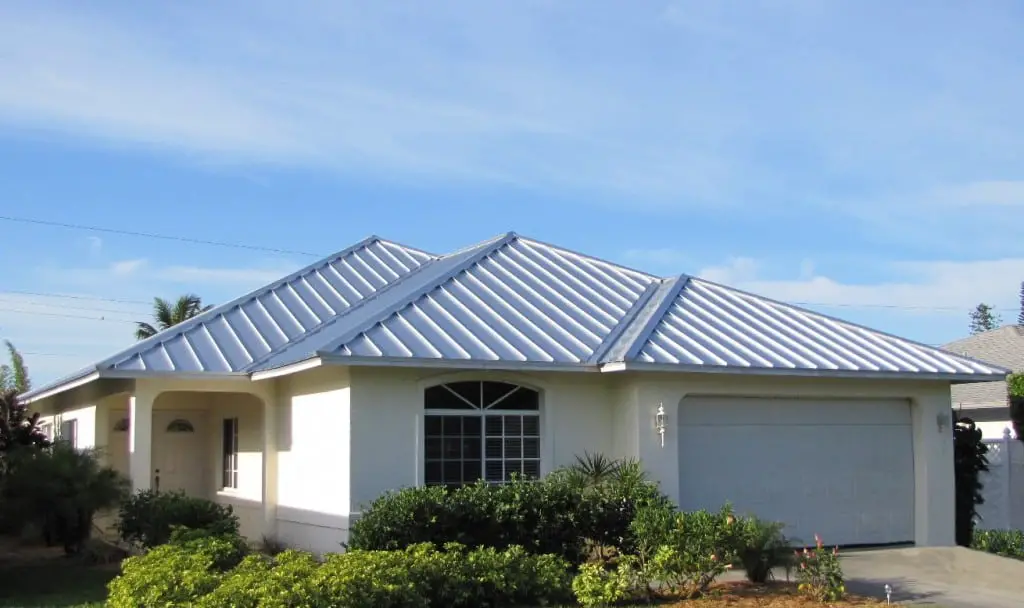
Conclusion
Additionally, regular maintenance and inspection are crucial in preventing condensation on a metal roof. Clearing debris, such as leaves or branches, from the roof surface and gutters can help to prevent water from pooling and causing moisture buildup. Regularly inspecting the roof for any signs of damage or leaks is also essential, as these can contribute to condensation issues. Promptly addressing any issues found during inspections can prevent further damage and minimize the risk of condensation.
Lastly, considering the use of a vapor barrier can be beneficial in prevent condensation. A vapor barrier is a material that prevents moisture from passing through it. Installing a vapor barrier beneath the metal roof can help to prevent moisture from reaching the roof surface and causing condensation. However, it is important to ensure that the vapor barrier is properly installed and sealed to be effective.
In conclusion, preventing condensation on a metal roof requires a combination of proper ventilation, insulation, regular maintenance, and the use of a vapor barrier. By implementing these measures, homeowners can significantly reduce the risk of condensation buildup and protect their metal roof from potential damage. It is important to consult with professionals and follow manufacturer guidelines to ensure the most effective methods are used for your specific roof type and climate. With proper care and attention, condensation on a metal roof can be effectively managed, prolonging its lifespan and maintaining its functionality.



